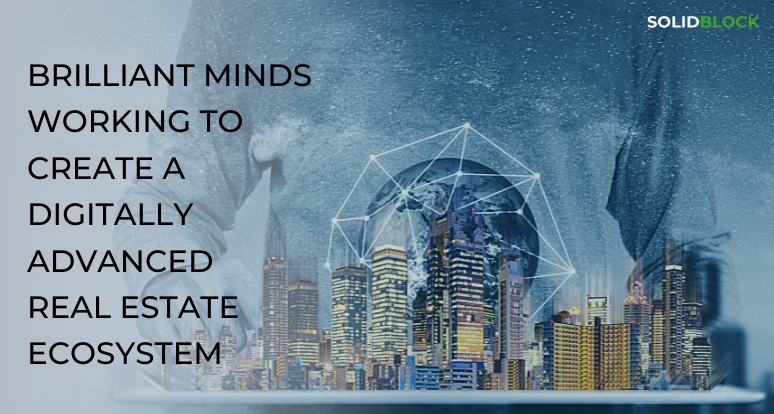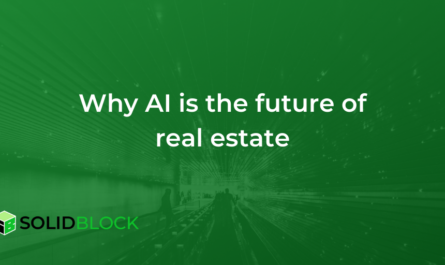
Technology is the future and most industries have acknowledged the necessity of adapting digitally to this fast-changing reality. Covid-19 has apparently acted as an accelerator to many high-tech companies, which have set out to seek solutions to address the many challenges experienced by different sectors.
Compared to other industries, the real estate industry has been rather slow in adopting technology for its own benefit. However, there is no better time than the present to disrupt the old, cumbersome, and heavily bureaucratic real estate market. Brilliant minds are working hard around the clock on new ideas, with a unified goal in mind — namely, that of creating a real estate ecosystem with streamlined, secured, user-friendly, personalized processes, which are also cost and time saving. Yet, the beauty of it all is that each company is addressing the endeavor from a different angle, creating their own unique and valuable puzzle piece to the environment.
SolidBlock provides a valuable puzzle piece in the PropTech industry, working toward making real estate work for everyone. Recently, SolidBlock’s Cofounder & CMO, Yael Tamar, was also acknowledged as one of the TOP-20 PropTech Influencers.
SolidBlock’s blockchain-based platform turns real estate into digital securities and in this way, provides property owners with a variety of benefits: creating fully compliant digital financial products; raising capital efficiently; offering their investors rights to revenue, dividends, or interest; allowing investors to benefit from the growth of the property; offering the option to liquidate at any time; and saving on intermediary costs. SolidBlock enables investors to build a personal portfolio by choosing each investment, as well as to diversify and de-risk via lower minimum investment amounts.
Many of the emerging innovative PropTech trends revolve around already existing technologies, such as artificial intelligence (AI), the Internet of Things (IoT), blockchain, 5G, virtual reality (VR), machine learning (ML), and augmented reality (AR). Below we’ve chosen to list four of our favorite leading trends that are based on these existing technologies.
Connecting More to More Using IoT Smart devices related to work-life, and lifestyle are becoming incorporated into everyday home life, allowing a seamless user experience. A leading example is Amazon as its Alexa-enabled Echo system is integrated into most high-profile IoT products which are commonly used in a household. Also, the commercial real estate (CRE) industry benefits greatly from IoT as it accumulates tremendous amounts of data. As John D’Angelo, US real estate leader, Deloitte Consulting, explained in Forbes, collecting and using data about a building and combining it with data from IoT about how the building operates, will allow efficiency, improve occupant experience and help identify current or potential issues.
Smart-Mobility Revolution Affecting Real Estate Property value has always been directly correlated to how well connected the property is to transport services. Property owners need to keep up with the constant changes in the mobility sector and take into account the need to adapt their assets to include smart and desired solutions and experiences for the community. According to PWC Global: “This is an emerging trend for the real estate industry, and one that will require a change of mindset to factor in the growing complexity of transport solutions into investment decision making.”
Direct Digital Engagement The direct digital engagement trend enables real estate end-users touchless services and access, ensuring an automated, safe and healthy ecosystem. This trend takes on special relevance in the Covid-19 pandemic.
Building Information Modeling (BIM) Building Information Modeling (BIM) is a fast-increasing trend found in the construction sector worldwide. A BIM is a “digital twin” (digital 3D replica) of a building. This can assist constructors and engineers to better plan a building project and quickly locate emerging issues. Also, building owners can benefit from the real-time analytics this technology offers, to simulate ideas on how to optimize energy performance or other changes, trying them out first on the model and only later on the physical building.

 by
by 

